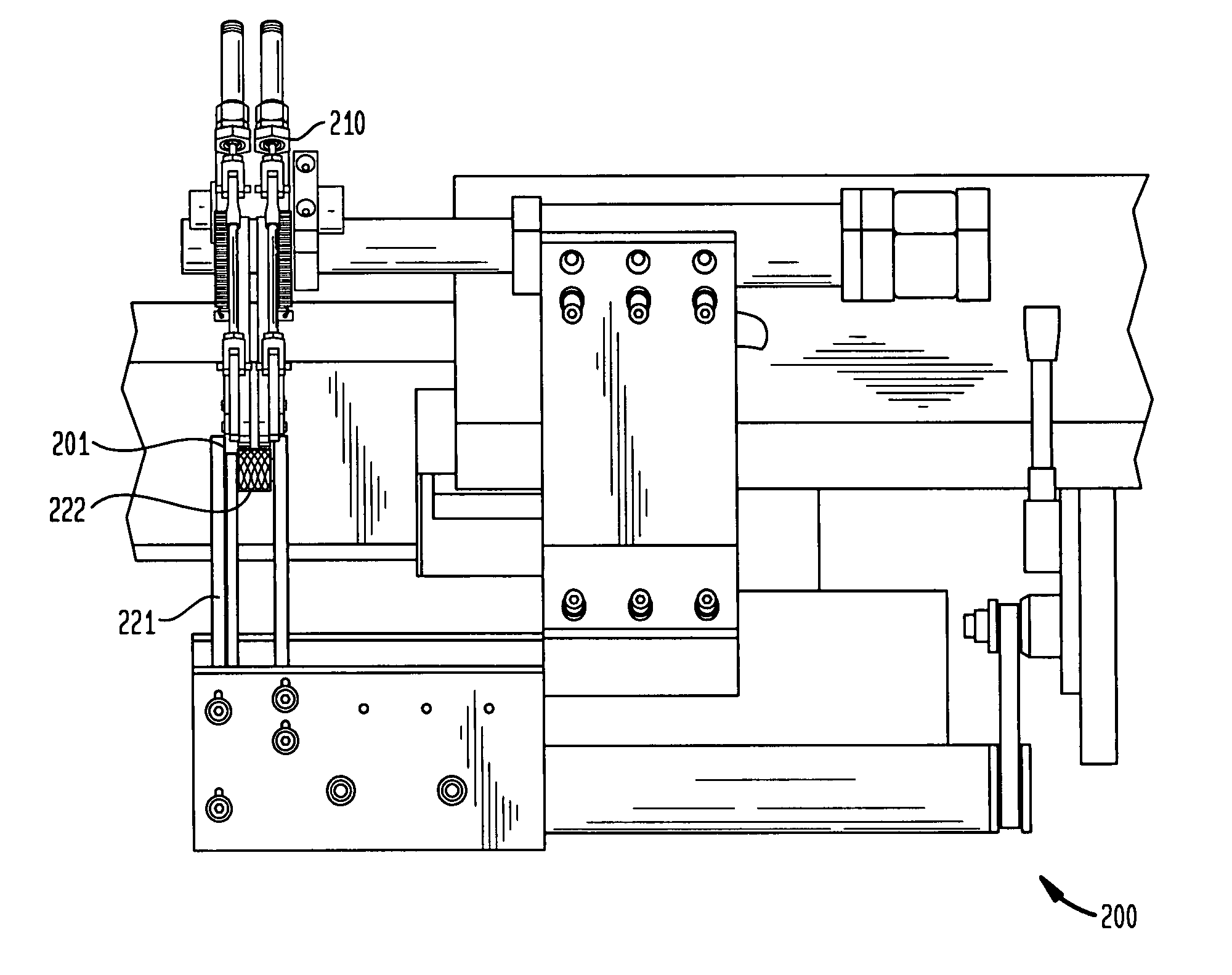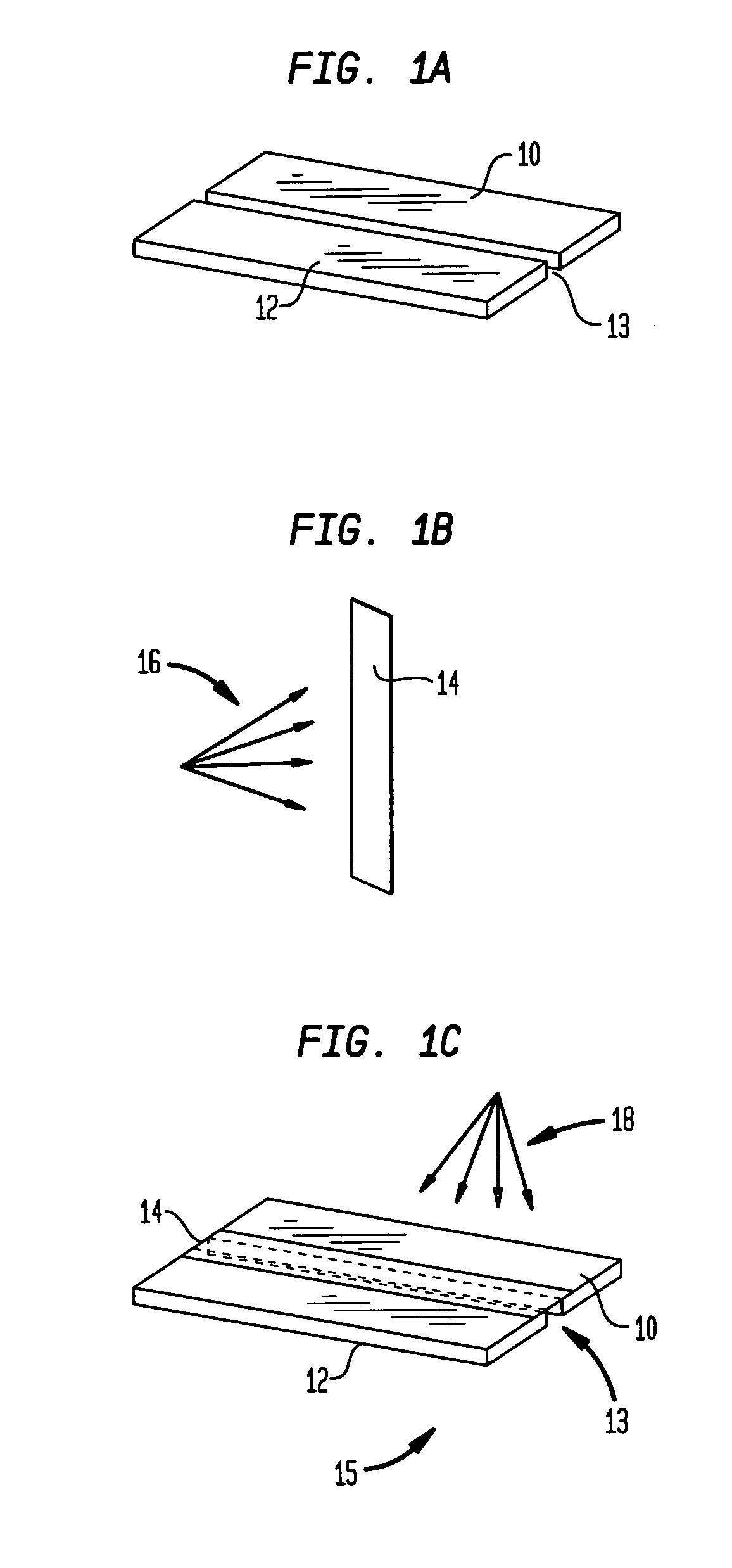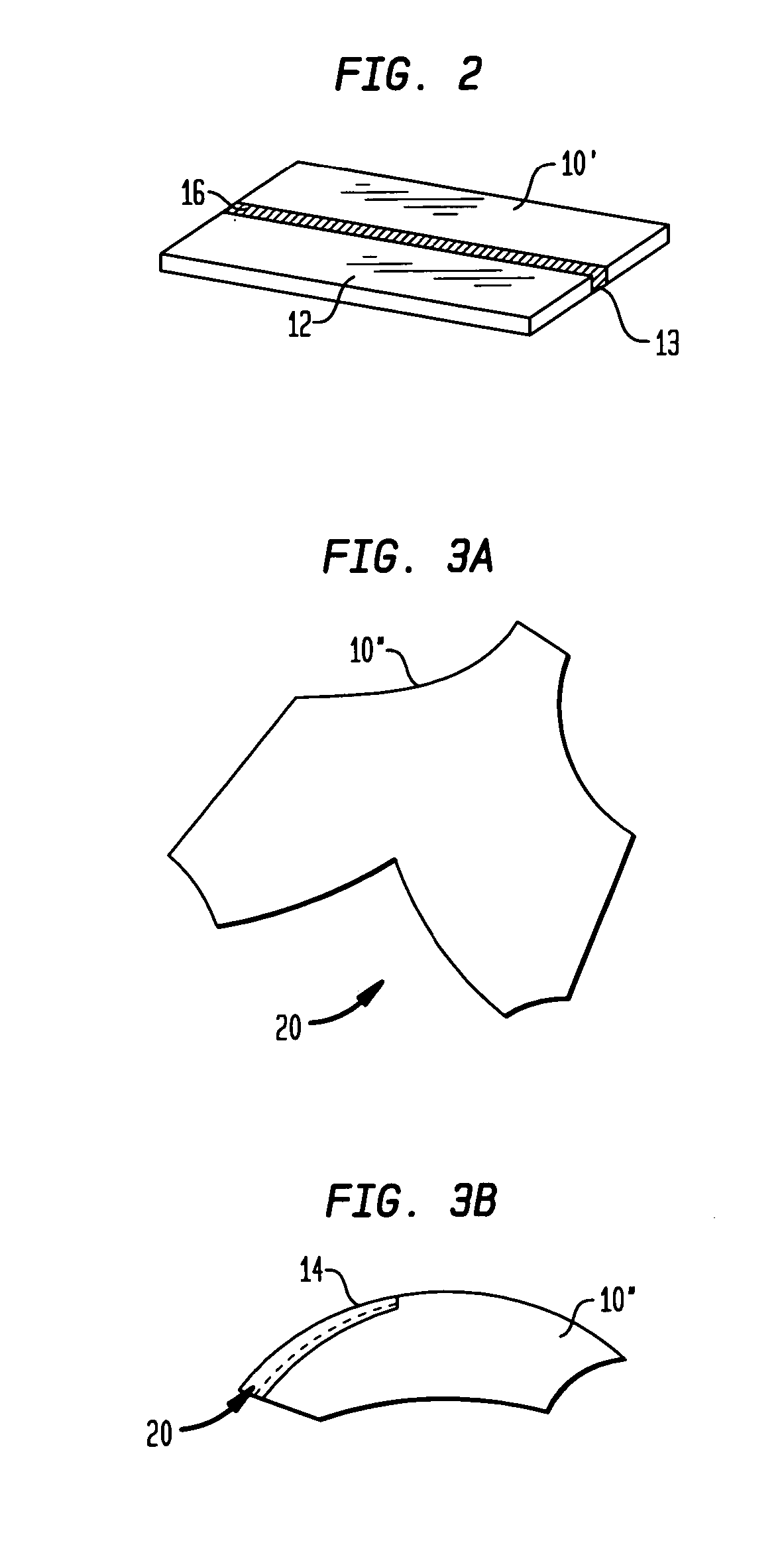Adhesive seam and method and apparatus for its manufacture
a technology of sewn seams and seams, applied in the field of sewn seams for garments, can solve the problems of chafing, discomfort, etc., and the sewn seam has fallen from favor from the use of foundation garments and shape wear,
- Summary
- Abstract
- Description
- Claims
- Application Information
AI Technical Summary
Benefits of technology
Problems solved by technology
Method used
Image
Examples
Embodiment Construction
[0046] Referring to the drawings, FIGS. 1A-1C are a schematic representation of seams according to certain embodiments of the present invention. FIG. 1A illustrates two panels or sheets of fabric 10, 12 in edge-wise abutment at 13, in preparation for forming a seam. The fabric panels are preferably made of a synthetic material such as polyester, polyurethane, nylon, rayon, etc. It is advantageous if the fabric panels are smooth before the seam is formed. If the material is not sufficiently smooth, it can be calendared. Calendared materials provide a more uniform surface on which to apply the material strip carrying adhesive. This ensures that the adhesive contact is uniform, and the seam is less likely to bunch when formed than if the fabric is non-calendared.
[0047] The fabric panels 10, 12 are typically finished fabrics, although the fabric panels can also be unfinished. Finished fabrics are well known to those skilled in the art. There are many fabric finishes, each providing a c...
PUM
| Property | Measurement | Unit |
|---|---|---|
| Temperature | aaaaa | aaaaa |
| Temperature | aaaaa | aaaaa |
| Temperature | aaaaa | aaaaa |
Abstract
Description
Claims
Application Information
 Login to View More
Login to View More - R&D
- Intellectual Property
- Life Sciences
- Materials
- Tech Scout
- Unparalleled Data Quality
- Higher Quality Content
- 60% Fewer Hallucinations
Browse by: Latest US Patents, China's latest patents, Technical Efficacy Thesaurus, Application Domain, Technology Topic, Popular Technical Reports.
© 2025 PatSnap. All rights reserved.Legal|Privacy policy|Modern Slavery Act Transparency Statement|Sitemap|About US| Contact US: help@patsnap.com



